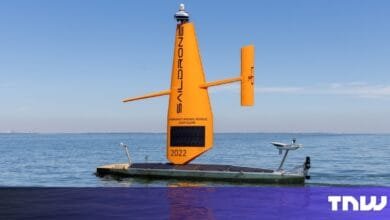Europe’s AI Submarine Fleet Expands with Helsing’s New Drone

▼ Summary
– Helsing unveiled the SG-1 Fathom, an autonomous mini-submarine for underwater reconnaissance, part of Europe’s growing fleet of ocean drones.
– The Fathom, powered by AI platform Lura, can classify and locate underwater sounds 10 times quieter and 40 times faster than competing models.
– Ocean reconnaissance has gained urgency after the 2022 Nord Stream sabotage, with European nations and NATO boosting maritime defences amid Russian aggression.
– Ukraine has effectively used naval drones like the Magura and Seawolf in combat, while other European countries are developing similar autonomous vessels.
– The EU and UK are investing heavily in defence tech, with Helsing securing contracts worth hundreds of millions and planning to deploy Fathom fleets within a year.
Europe’s underwater defense capabilities are taking a major leap forward with Helsing’s latest autonomous submarine, designed to enhance maritime security through advanced AI-powered reconnaissance. The SG-1 Fathom, a compact 1.95-meter drone, represents a significant addition to the continent’s growing fleet of ocean surveillance systems, aimed at safeguarding critical subsea infrastructure and naval assets.
Built for endurance, the Fathom can operate autonomously for up to three months, patrolling vast ocean expanses with minimal human intervention. At its core is Lura, an AI-driven acoustic model capable of detecting and classifying underwater sounds with remarkable precision. Unlike traditional systems, Lura identifies vessel noises at volumes 10 times quieter than competing technologies and processes data 40 times faster than human operators.
The mass-producible design allows Helsing to deploy these drones in large numbers, forming expansive underwater “constellations” for comprehensive surveillance. This approach addresses mounting concerns over subsea vulnerabilities, particularly after the 2022 Nord Stream pipeline attacks exposed the risks to underwater energy networks. With NATO members bolstering maritime defenses amid rising tensions, autonomous systems like the Fathom are becoming indispensable.
Ukraine’s successful deployment of naval drones against Russian forces has underscored the strategic value of unmanned maritime technology. Earlier this month, Ukrainian forces used the Magura drone to down two Russian aircraft, showcasing the growing role of AI in modern naval warfare. Meanwhile, other European firms are advancing similar innovations—Denmark is testing autonomous sailboats for Baltic patrols, while British company Kraken is developing uncrewed combat vessels.
The push for defense tech aligns with broader European initiatives like ReArm Europe, a €800 billion plan to modernize military capabilities by 2025. The UK has also pledged to allocate 10% of its defense budget to cutting-edge innovations. Helsing, already a leader in AI-driven combat systems, is well-positioned to capitalize on this momentum. Since its 2021 launch, the company has secured hundreds of millions in contracts, with naval forces expressing strong interest in the Fathom.
Helsing’s expansion into underwater drones marks a strategic shift, complementing its existing portfolio of AI-powered fighter jet systems. The company aims to deploy its first operational fleets within a year, reinforcing Europe’s underwater defense networks at a critical time.
As geopolitical tensions escalate, autonomous maritime systems are set to play a pivotal role in securing Europe’s waters. The rapid adoption of these technologies reflects a broader trend—where AI and robotics are reshaping modern warfare, both above and below the surface.
(Source: The Next Web)
